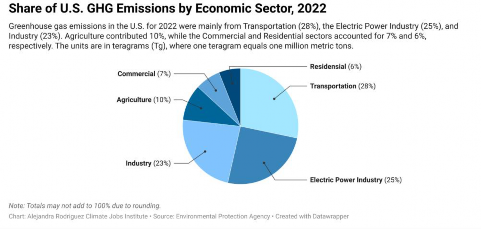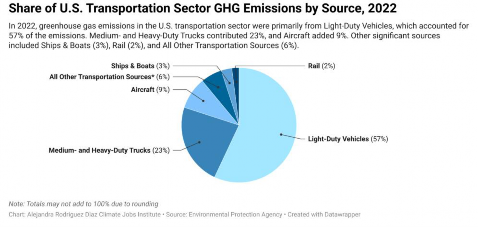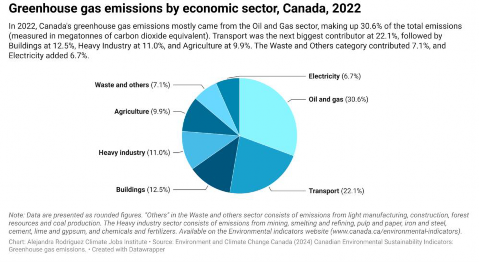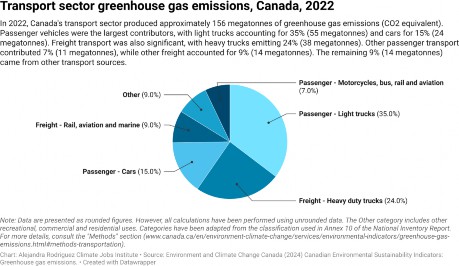
< Previous | Contents | Next >
Emissions by Sector
So where do all of these greenhouse gas emissions come from? In the United States, transportation activities are the largest source of emissions, accounting for 28% of total emissions in 2022. The electric power sector follows at 25% with industry standing at 23%. Key sources of industrial emissions include the production of cement, steel, and chemicals.12

Within the transportation sector, light, medium, and heavy-duty vehicles are the largest contributors. Aviation and rail–two key IAM industries–are also major contributors to transportation emissions.

![]()
11 IPCC, Global Warming of 1.5°C.
Other significant contributors to global greenhouse gas emissions include industrial processes, agriculture, deforestation, and land use changes.13
In Canada, the breakdown is slightly different. In 2022, the oil and gas sector was the largest source at 31% of total emissions, followed by the transport sector, buildings, heavy industry, agriculture, electricity, and waste.14 Emissions from the oil and gas sector have risen 83% since 1990, largely driven by the massive 450% increase in emissions-intensive oil sands production over that period.15

Looking at the breakdown within transportation in 2022, freight – including heavy trucks, rail, marine, and aviation – accounted for about 33% of emissions (51.8 megatonnes).16 Passenger transport made up about 58% (90.2 megatonnes), with the remaining 9% (14.4 megatonnes) classified as "Other". While emissions from passenger cars declined 46% since 1990 -from 44.9 to 24.1 megatonnes-, emissions from light trucks more than doubled (increasing by 114%) as they became a larger portion of the vehicle fleet, and freight emissions grew significantly, up 72% from 1990 levels.17
![]()
13 Calvin et al., “IPCC, 2023.”
15 Environment and Climate Change Canada.
16 Environment and Climate Change Canada.
17 Environment and Climate Change Canada.
